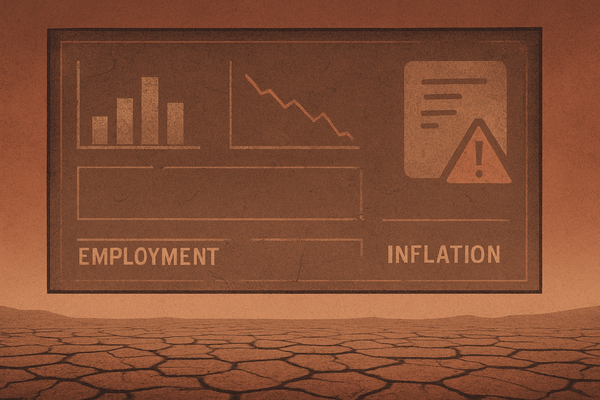The Motley Fool Points to Pharmaceutical Powerhouses: A Deep Dive into Healthcare's Growth Frontier

The Motley Fool, a renowned financial advisory firm, has recently issued a bullish outlook on pharmaceutical growth stocks, signaling significant investment opportunities within the dynamic healthcare sector. As of October 16, 2025, this positive sentiment is underpinned by a confluence of groundbreaking innovation, a supportive business environment, and strategic corporate developments. The firm's recommendations highlight a sector poised for resilience and substantial expansion, even amidst broader market volatility.
This optimistic stance by The Motley Fool underscores a pivotal moment for pharmaceutical companies. Breakthroughs in areas like gene editing and GLP-1 drugs, coupled with the transformative power of artificial intelligence in drug discovery, are creating fertile ground for long-term growth. Investors are being guided towards companies demonstrating robust pipelines and strategic foresight, suggesting that the healthcare sector remains a cornerstone of economic activity with enduring demand for novel treatments.
Unpacking The Motley Fool's Pharmaceutical Prescription
The Motley Fool's recent spotlight on pharmaceutical growth stocks is a detailed endorsement of several key players in the healthcare arena. Among the top recommendations are pharmaceutical giants like Eli Lilly (NYSE: LLY), lauded for its extensive pipeline and the phenomenal success of its GLP-1 products, Mounjaro and Zepbound, which are driving significant revenue expansion. AstraZeneca (NASDAQ: AZN) is also highly favored, boasting an impressive pipeline of nearly 200 projects across diverse therapeutic areas, including oncology and rare diseases, with projections of generating $80 billion in annual revenue by 2030. Pfizer (NYSE: PFE), despite recent challenges, is presented as a "once-in-a-decade investment opportunity," with its aggressive pipeline expansion, upcoming product launches, and strategic acquisitions like Metsera positioning it for a strong comeback.
The timeline of The Motley Fool's outlook on the healthcare sector has consistently been positive over the long term, driven by fundamental demographic trends—such as an aging global population—and continuous technological advancements. While the broader healthcare market experienced some struggles since 2022 due to rising interest rates, The Motley Fool has maintained its conviction, identifying strong opportunities in companies that are innovating and expanding. Their recent articles, published as of October 2025, reinforce this sustained belief in the sector's growth potential.
Key players and stakeholders involved in these recommendations include The Motley Fool's team of expert analysts, such as Keith Speights, David Jagielski, and Prosper Junior Bakiny, whose research and insights are disseminated through various services like "Stock Advisor." The primary stakeholders are individual investors who subscribe to these services, seeking to build long-term wealth. Pharmaceutical companies like Eli Lilly, AstraZeneca, and Pfizer are direct beneficiaries of positive recommendations, potentially seeing increased investor interest and capital inflow.
Initial market reactions to such advice, while difficult to isolate from broader market dynamics, show a generally positive sentiment. The S&P 500 Pharmaceuticals Index recently surged by 11% over five trading days, marking its best weekly gain since 2022. However, individual stock movements can vary; for instance, Eli Lilly's shares experienced a decline earlier in 2025 despite strong GLP-1 sales, attributed to "underwhelming news" regarding a new weight-loss pill, which The Motley Fool views as a buying opportunity. This highlights that while recommendations can drive interest, specific company news and broader market trends ultimately influence short-term performance.
The Winners and Losers in the Pharmaceutical Race
The Motley Fool's endorsement of pharmaceutical growth stocks directly impacts a range of public companies, creating potential winners and losers in the eyes of investors. Leading the charge among the recommended "winners" is Eli Lilly (NYSE: LLY), whose dominant position in the burgeoning GLP-1 market with Mounjaro and Zepbound positions it for continued substantial revenue growth. AstraZeneca (NASDAQ: AZN) is another strong contender, with its vast and diversified pipeline across critical therapeutic areas like oncology, signaling robust long-term expansion. Pfizer (NYSE: PFE) is seen as a compelling comeback story, with its aggressive pipeline and strategic foray into weight management via Metsera, potentially re-establishing its growth trajectory.
Other companies poised to benefit from increased investor attention include AbbVie (NYSE: ABBV), recognized for its resilient performance post-Humira patent expiration and its strong pipeline, and Johnson & Johnson (NYSE: JNJ), a diversified healthcare giant with a robust pharmaceutical segment and a history of consistent dividends. Vertex Pharmaceuticals (NASDAQ: VRTX) stands out for its near-monopoly in cystic fibrosis treatments and its innovative gene-editing partnerships. Even smaller, more speculative biotechs like CRISPR Therapeutics (NASDAQ: CRSP), with its approved gene-editing therapy Casgevy, are highlighted for their revolutionary potential, attracting risk-tolerant, long-term investors.
The impact of The Motley Fool's recommendations can be significant, often leading to an "announcement effect" that drives initial positive abnormal returns and, more importantly, sustained outperformance over extended periods. Their "Stock Advisor" picks have historically outperformed the S&P 500 by a substantial margin, leading to increased trading volumes and heightened investor interest in the highlighted companies. This validation can be particularly crucial for smaller biotechs, attracting further partnerships and capital.
However, not all companies benefit equally, and some may be considered "losers" in this dynamic environment. Companies heavily reliant on drugs nearing patent expiration without a strong pipeline to offset lost revenue, such as those facing significant "patent cliffs," are vulnerable. Early-stage biotechs without clear paths to commercialization or those with limited therapeutic diversification also face higher risks. Furthermore, companies susceptible to adverse regulatory or policy changes, such as new drug pricing regulations or tariffs, could see negative impacts on their profitability and investor appeal.
Broader Implications and Historical Context
The Motley Fool's positive outlook on pharmaceutical growth stocks is not an isolated event but rather a reflection of several profound broader industry trends shaping the healthcare landscape in 2025. The sector is experiencing an unprecedented wave of scientific breakthroughs, fueled by advancements in artificial intelligence (AI), gene editing, and novel therapeutic modalities. Companies like Eli Lilly (NYSE: LLY) and AstraZeneca (NASDAQ: AZN) exemplify this trend with their extensive pipelines in high-growth areas such as GLP-1 drugs for weight loss and diabetes, and innovative oncology treatments like radioconjugates. CRISPR Therapeutics (NASDAQ: CRSP) stands at the forefront of gene-editing technology, demonstrating the industry's pivot towards precision medicine and potentially curative therapies.
These recommendations also underscore the intensifying role of AI in drug discovery and development. AI is not only streamlining research and reducing costs but also accelerating the identification of new drug candidates, promising a "renaissance" in healthcare technology. This technological integration creates ripple effects, compelling competitors to increase their own R&D investments in AI and advanced platforms to remain competitive. Strategic partnerships, like that between CRISPR Therapeutics and Vertex Pharmaceuticals (NASDAQ: VRTX) for Casgevy, highlight how collaborations are becoming crucial for bringing complex innovations to market and mitigating individual development risks.
Regulatory and policy implications remain a critical backdrop for these investment trends. The U.S. Inflation Reduction Act (IRA), for instance, introduces drug price negotiations, which could impact pharmaceutical companies' revenues and R&D incentives. Companies like Pfizer (NYSE: PFE) are actively navigating these policy shifts, engaging in discussions to address potential tariffs and secure manufacturing investments. Historically, the pharmaceutical sector has always been sensitive to regulatory environments, with major policy changes often dictating investment flows and company strategies. The industry's ability to adapt to evolving FDA approval processes, intellectual property laws, and global trade policies will be paramount for sustained growth.
Looking at historical precedents, The Motley Fool's long-term "buy and hold" strategy for innovative pharmaceutical companies has consistently proven effective. Past eras saw similar investment focus on companies developing "blockbuster" drugs or pioneering new therapeutic classes, such as statins or biologics. While biotech stocks have always carried inherent volatility due to high R&D costs and clinical trial risks, the current emphasis on gene therapy and personalized medicine represents a new frontier, akin to the early days of biotechnology. The enduring demand for healthcare, coupled with continuous scientific advancement, reinforces the pharmaceutical sector's defensive characteristics and its potential for long-term value creation.
The Road Ahead: Navigating Pharmaceutical Investments
The coming months and years hold a mix of exciting possibilities and strategic imperatives for pharmaceutical growth stocks, particularly those recommended by The Motley Fool. In the short term, investors should anticipate significant movements driven by pipeline catalysts. Positive clinical trial readouts, such as the upcoming Phase 2 results for Structure Therapeutics (NASDAQ: GPCR)' oral GLP-1 candidate, aleniglipron, or further data from CRISPR Therapeutics (NASDAQ: CRSP)' CTX112, could trigger substantial stock price surges. The ongoing expansion of Eli Lilly (NYSE: LLY)'s GLP-1 products and new label indications are also expected to fuel strong financial results, keeping the company in the spotlight.
Longer term, the sustained growth of the pharmaceutical sector will hinge on companies' ability to maintain robust and innovative pipelines, addressing significant unmet medical needs. The global GLP-1 market, projected to reach $150 billion by 2035, presents a massive and enduring opportunity, with leaders like Eli Lilly and Novo Nordisk (NYSE: NVO) poised for continued expansion. Furthermore, the increasing integration of artificial intelligence (AI) in drug discovery and development is set to revolutionize the industry, leading to faster breakthroughs and more efficient operations, thereby creating long-term value for companies that successfully leverage this technology.
Strategic pivots will be essential for pharmaceutical companies to navigate this evolving landscape. This includes a continued emphasis on R&D efficiency, adopting "venture-capital-like disciplines" in portfolio management to focus on high-potential products. Strategic partnerships and mergers and acquisitions (M&A) are also expected to intensify, allowing companies to expand pipelines and accelerate innovation, as seen with Pfizer (NYSE: PFE)'s acquisition of Metsera. Companies must also adapt to evolving regulatory and pricing pressures, such as those introduced by the Inflation Reduction Act, which may necessitate a shift from solely top-line growth to prioritizing sustainable margins.
For investors, potential scenarios include continued outperformance for innovative companies with strong pipelines and effective AI integration, leading to substantial long-term gains. Conversely, companies that fail to innovate or effectively manage patent cliffs may become "value traps." The inherent volatility of smaller biotech firms like CRISPR Therapeutics means they offer exceptional growth prospects but also carry higher risks, making them more suitable for aggressive growth investors. Diversification within the pharmaceutical sector or through broader healthcare ETFs remains a prudent strategy to mitigate risks.
A Lasting Impact on the Market
The Motley Fool's recent recommendations of pharmaceutical growth stocks underscore a profound and enduring shift in the healthcare investment landscape. The key takeaway is a strong conviction in the long-term potential of companies at the forefront of scientific innovation, particularly those leveraging cutting-edge technologies like AI and dominating high-growth therapeutic areas such as GLP-1 drugs for weight loss and gene-editing therapies. Companies like Eli Lilly (NYSE: LLY), AstraZeneca (NASDAQ: AZN), and Pfizer (NYSE: PFE) are positioned as prime examples of firms with robust pipelines and strategic foresight, poised for sustained expansion.
Moving forward, the pharmaceutical market is projected to continue its robust growth, driven by an aging global population, increasing demand for novel treatments, and transformative technological advancements. AI-powered drug discovery and precision medicine are set to redefine the industry, accelerating R&D and enabling more personalized patient care. However, the market is not without its challenges, including looming patent cliffs, intensifying generic competition, and the evolving landscape of regulatory and pricing pressures, particularly from initiatives like the Inflation Reduction Act.
The lasting impact of The Motley Fool's investment advice, rooted in its long-term "buy and hold" philosophy, is its potential to guide investors toward fundamentally strong businesses that can generate substantial wealth over decades. Their track record of outperforming broader market indices suggests that a disciplined, research-driven approach to pharmaceutical investments can yield significant returns. The success of their recommended companies in capitalizing on major health trends exemplifies the value of identifying enduring growth opportunities.
In the coming months, investors should closely monitor several critical factors. Key clinical trial readouts, especially for promising candidates in the GLP-1 and gene therapy spaces, will serve as significant catalysts. Developments in the highly competitive GLP-1 market, including new product launches and manufacturing expansions, will also be crucial. Furthermore, ongoing M&A activity, the full impact of the Inflation Reduction Act on drug pricing, and the successful integration of AI by pharmaceutical companies will all shape the market's trajectory. Discerning investors will remain focused on companies demonstrating strong underlying business prospects, innovative pipelines, and the agility to adapt to a rapidly changing technological and regulatory environment.
This content is intended for informational purposes only and is not financial advice



